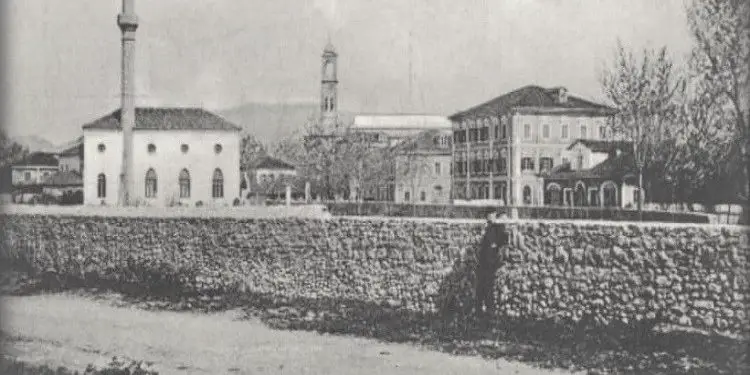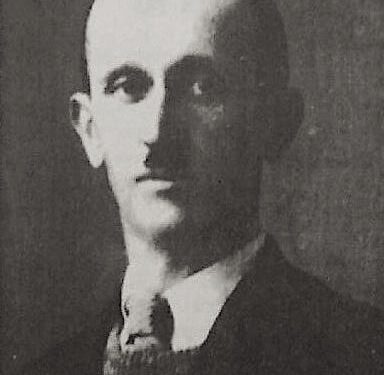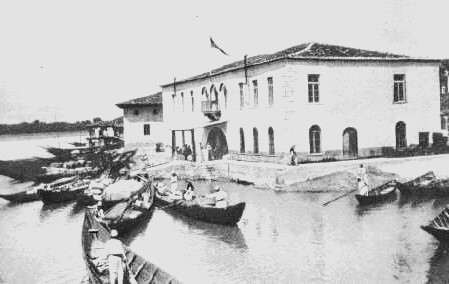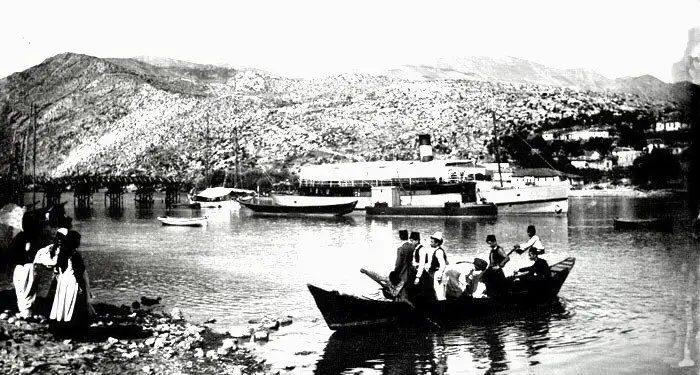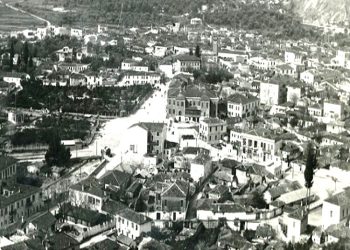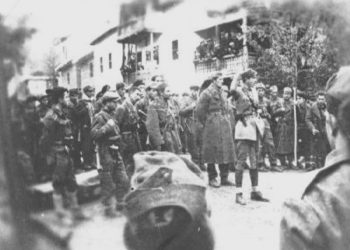By Ali Hassan
Memorie.al / An important part of the history, culture and tradition of Shkodra is the Old Market of this city, which, unfortunately, no longer exists today. According to oral records, its beginnings are thought to belong to the Bushatlli dynasty, but it reached its greatest prosperity during the Ottoman occupation, becoming the largest, most beautiful and most famous bazaar in the four Albanian vilayets, especially compared to the Bazaar of Prizren. Someone else tells us that in terms of beauty, grandeur and security, this Bazaar was second only to the one in Istanbul, and at that time, it was the largest market, almost in all of Rumelia.
The Grand Bazaar was located near the old city, from where it got its name, at a distance of about 2 km. with Shkodra e Re, in an uninhabited area, but which lay below Rozafa Castle and, on the shore of the lake in Shkodra, up to where the Buna River comes out. Through them, this bazaar was connected to the maritime and commercial lines, to the outside world.
The old bazaar in Shkodër, in its heyday, became a truly large commercial city, between the old and the new part of the city, spread over 1.8 km. length, where trade was boiling and where its size allowed more than 10,000 people to work and shop there. While on market days, Sundays or Wednesdays, they could be present there more than 30 thousand people, which was also shown by the fact that the people of Shkodran have had a tradition and have been valued, as; the most excellent “masters” in the trade.
At that time, dozens of small and large ships, up to 1000-ton steamships, were anchored on the shores of Lake Buna and the Buna River, and there was also a ship market, which was in “competition” with the “Grand Market”, but which was also like its continuation. Large warehouses were set up there for the entry and exit of goods; there were large customs offices, as well as banks and close to 1,500 shops, unrepeatable to this day. To the right of the Buna Bridge, there used to be the Customs Office, where all financial operations were carried out for the import-export of goods in Shkodër.
The shops were located in more than 30 sokaks (streets) of the bazaar, which were divided according to trades (crafts), where several hundred artisans and apprentices worked, who learned and worked every day. Inside the Old Bazaar, there was special order and discipline, as well as coffee, barbershop, ironing services, etc. During the working hours, the merchants for their needs communicated with each other through small windows and at the end of the working day, the shops were closed with shutters, shutters, and provided with guards and other security elements.
It is worth informing that; The Old Bazaar, in addition to the construction side, was also systematized in the underground part, specifically, there were 5 such channels, which removed the water from the bazaar and were close to 1.8 meters deep.
The first channel collected the water from the hills, the second crossed the “alley of tree sellers”, a third, crossed the “fish pier”, the fourth, crossed the “alley of butchers” and the fifth, passed through the “Big Bazaar” , but all five of these canals poured the collected water into Buna. Of course, the canals were cleaned every year, by special workers.
So, since that time, the systematization of the bazaar has been given great importance, both on the construction side, and in relation to its full functioning, for the development of trade and handicrafts. Thus, very quickly, the Old Market became the largest commercial center of the Albanian territories and, more broadly, in the export – import of goods, from; Kosovo, Montenegro, Serbia, Manastir, Bulgaria and vice versa, i.e. in all of Rumelia at that time.
In the commercial and financial plan, the Grand Bazaar in Shkodër has been evaluated by others, such as; The largest “hypermarket” of that time in the Balkans, as well as being incomparable, in terms of size, the assets it had inside and the processing capacity of the goods, compared to other bazaars, of our neighbors, which proves that Shkodra, has was the Metropolis of Arberia.
Head-bargain
The word “sokak” means: street, and comes from the Arabic “suke”, which means market. In our case, we have used the word sokak to indicate the square or streets of each profession or commercial activity. The first street of Pazar started with Krye-pazar, which was also the first traffic station for the Shkodra-Kosovo line, where there were also hostels for caravan travelers, who brought or loaded goods to the Grand Bazaar in Shkodra.
The main bazaar was also a resting and standing square for carts or carriages, with which people traveled from the city to the bazaar and vice versa. At the top of the bazaar, 3 main streets met, such as: Parruca Street, Tophana Street and Mol (port) Street. Adjacent to the Main Bazaar, above it, was also the Quarter of the Judges, as well as their apartments, during the Ottoman occupation.
There were also two saranjas, which were used as water reservoirs, in that neighborhood. The street that started in Krye-Pazar has continued to the end of Skela and Peshku Sokak, dividing the Grand Bazaar into two parts.
Bezistan
To the right of the center of the Grand Bazaar, was Bezistan, i.e. the bazaar where valuable things and goods were kept. It was a real and modern gallery for the time, fenced, closed, where goods were stored and traded, among the most precious, such as: gold, jewels and antique objects, well appreciated of the time and, placed for this purpose, in 40 shops, two floors each.
This masterpiece, as one of the rarest constructions of the time, had four large and two small gates and was built in 1807-1808 by Ibrahim Pasha and his successor, Mustafa Pasha. Even this construction, after 1944, was razed, causing great damage, the loss of a historical monument of this city.
Cult objects as part of the bazaar
In the Grand Bazaar, 5 mosques were also built, such as; The Mosque of Teqe (1756), the Mosque of Kullukhanese, the Mosque of the Skele, the King’s Mosque or the Selvija Mosque, as well as the “Mesxhidi” (small mosque, without minaret), as well as 5 mejtepe, for education.
The tragic end of a giant
With the departure of the Turks from Shkodra, in addition to the natural factor, many other factors have damaged the Old Market. In particular, the Montenegrins, when they retreated from the 6-month siege of Shkodra, in 1913, looted, burned and deliberately destroyed more than 250 of the best shops in almost the entire Grand Bazaar in Shkodra.
The Greek settlers did the same, burning and destroying it afterwards. But communism did the biggest damage to this bazaar, after 1944, when it came to power, which took revenge on the Old and Big Bazaar in Shkodër, and decided to destroy it little by little from the face of the earth, as well as from the map of the European Market.
The demolition of the Grand Bazaar, with over 30 alleys and nearly 1,500 shops, began gradually, where almost everything was handcrafted and of a very high quality. The market was left in the hands of the Greek immigrants, as well as the Jews, who, in fact, treated him worse and worse. They burned doors and windows, and systematically destroyed everything that was there.
And as if this was not enough, Enver Hoxha’s Communist State Party, engaged to the point of stupidity, to fight capitalism in Shkodër, elaborated and announced; “the platform against private property” and against the Grand Bazaar, as well as issued the decision for the destruction of this Bazaar.
This was done at that time, due to the fact that this Pazar was the largest center of the market economy and Albanian capitalism, which at that time conflicted with Slavic-communist politics and ideology, because they were against private property.
Since the demolition of Pazar, Shkodra has never “raised its head”!
The Old and Great Bazaar was the first form of the beginning of free initiative, trade and large production and the development of capitalism in Shkodër. This achievement had made it, in the first place, stronger and richer than many other cities in the Balkans.
This was our Shkodra, which prospered thanks to work, trade and capitalist production, the first factories near the bazaar, such as a flour factory, an ice factory, a cement factory, as well as two machines for grinding tobacco, etc.
The party-state, just like the Montenegrins, broke and destroyed everything that had been built and achieved, with hard work and sweat, by the people of Shkodran, until that time. Trade in the “Old and Great Market” was banned, sailing in Bune, Liqen in Shkodër was banned, and access to the Adriatic Sea was also banned. Shkodra was cut off from all communication routes with Europe, the World and the capitalist development of that time. The best and most famous craftsmen and merchants of this city were expelled from their jobs.
Like the Grand Bazaar, Bezistan was also destroyed. The weekly bazaar was also closed. Trade was banned, for a population of over 200,000 inhabitants, at that time, who had linked their lives only to this market. More than 3,000 merchants were removed from commercial and production activities. So the ideators have always wanted to demolish Shkodra both as a tradition and as a culture, but also as an economy.
Hand – hand they managed to completely demolish the Old Bazaar up to that point no sign of him remained In this case. Shkodra lost an important historical object, why not? Also a monument of antiquity but it also lost its economy that I sacrificed as much as I could had raised it over the years.
A national disaster! The effect and consequences of this collapse have been catastrophic and have been continuously felt in every sector of the economy in Shkodër. From then until today, Shkodra has never “raised its head”.
A missing memorial, as part of Shkodra’s history and tradition!
At the end of these lines, for the history of a unique work, for Albania and the Balkans, our mind undoubtedly goes to one possibility: The establishment and revival today of a New Bazaar in Shkodër, precisely, in the place where the former Bazaar was old. Whether this is a mini-market, a memorial building, or something else, with whatever name we can christen it, it is enough to leave a “historical trace” there.
In order to rebuild this precious national value, we would like the implementation of such a project, both modern, contemporary and European, to be done by the best Shkodra businessmen and specialists, under the guidance and support of the Municipality of Shkodra.
The realization of such a beautiful and memorial work, as part of Shkodra’s history, glory, culture and tradition, where the “Old Market” used to be, at the entrance to the city, at the foot of the legendary Rozafa Castle, on the banks of the Buna River, the lake in Shkodra, which would undoubtedly add pride to this city, but naturally, it would also be an irreplaceable attraction for Shkodra tourism.
We emphasize that for some names, dates and events of our writing, we consulted the “encyclopedic work “Shkodra and Seasons” of the intellectual and talented researcher of language, history, literature, culture, tradition, publisher and translator, erudite and outstanding Albanianologist , Shkodran, “Teachers of the People” Hamdi Bushati. Memorie.al




